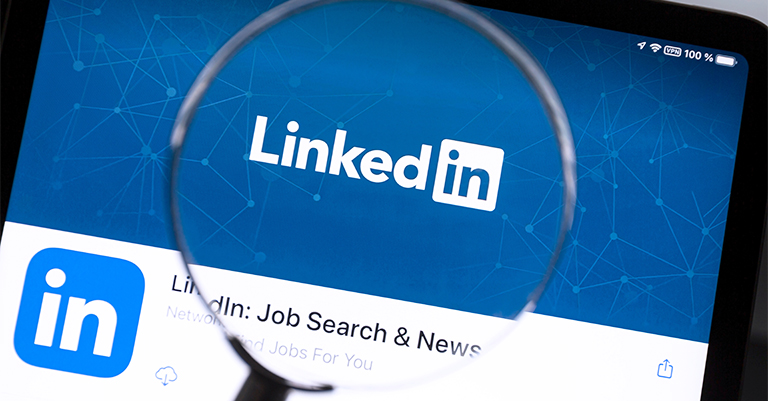Digital Footprint Best Practices: Your Guide to College Admissions Success
Want to impress college admissions teams? Your online presence matters more than ever. Think of it like your digital first impression that 36% of admissions officers will see. In this guide, you’ll learn about digital footprint best practices, cleaning up your online image, and creating posts that enhance your application.
What’s Your Online Image?
Everything you do online adds to your digital footprint. It’s like leaving footprints in the sand—every step shows where you’ve been. Your digital footprint includes:
- Posts you make on social media
- Photos and comments from friends who tag you
- Things you like or share
- Group memberships
- Comments on other people’s posts
Colleges look at these factors to learn more about you. They’re especially interested in the following:
- How you treat others
- What you care about
- How you’ve led and helped others
- What you do outside of class
- If you act professionally online
Check What’s Already Online

Before improving your online image, you must know what’s already out there. Here’s what to do:
Search Your Name
- Search yourself via Google: Put your full name in quotes for a better search. Colleges will do this when reviewing your background, so it’s best to know what they’ll find beforehand and do any damage control if necessary.
- Look at Google Images: Click on the Images tab to see all photos linked to your name. Pictures can make strong first impressions, so you want to find any problem photos quickly and deal with them accordingly.
- Check the first five pages: Don’t stop at page one. Colleges often look deeper into search results because they want to be thorough and might find old content that could hurt your chances.
- Search your email address: Put your email address in Google’s search box to find forgotten accounts. Your email links to all your online accounts, so this search helps you find profiles you may have forgotten about.
- Look up any nicknames you use online: Search for usernames and nicknames you’ve used on different websites. Colleges might find these accounts even if they’re not under your real name, so you must also check them.
Look at Your Accounts
- Make a list of all your social media accounts: Write down every site where you post or share things. This list helps you find and fix all your online content so colleges won’t find anything that surprises you.
- Check your privacy settings: Set your accounts so only friends see your posts. Social media sites change their settings often, so checking them keeps your private posts safe from public view.
- Review photos others have tagged you in: Look at every photo where friends added your name. Your friends might tag you in pictures you don’t want colleges to see, so you need to find these photos first.
- Track down old accounts: Look for accounts you made years ago but don’t use now. These old accounts might have posts you wouldn’t want colleges to see, so it’s smart to find them early.
- See what groups you’ve joined: Look at all the groups you’ve joined on social media. The groups you join show colleges what you care about, so make sure they all make you look good.
Clean Up Problems
Remove or hide any questionable content. This includes, but isn’t limited to the following:
- Party photos: Remove any pictures of parties or wild events. Colleges worry these photos show poor judgment, and they might think you won’t make good choices on campus.
- Mean comments: Delete any unkind posts or comments. Colleges want students who bring people together, not those who create drama or hurt feelings online.
- Foul language: Clean up posts with swear words or rough talk. Using bad words makes colleges think you can’t communicate well with teachers and other students.
- Angry posts: Take down posts where you lost your cool. Colleges look for students who can handle stress and problems calmly, not those who lash out online.
- Inappropriate jokes: Delete posts that mock others or make fun of serious things. Colleges want students who care about others’ feelings and think before they post.
Build a Positive Online Presence
Now it’s time to share content that makes colleges want to meet you. Here’s what to post:
Share Your Wins
- Share about good grades and awards: Share photos of honor roll certificates or academic prizes. Thank your teachers and classmates who helped you succeed, and explain what you learned.
- Show how you contribute to your community: Post pictures of yourself at volunteer events. Write about what you did, why it matters, and invite others to join future service projects.
- Post about leading clubs or teams: Take group photos at club meetings or team events. Share your group’s wins and thank your teammates for working hard together.
- Share your projects, art, or writing: Take clear photos of your best work and describe what inspired you. Show your growth by posting updates as you improve your skills.
- Celebrate team successes: Share photos of your team working together. Tell the story of how everyone helped achieve the goal, and praise others who made it happen.
Make Professional Accounts

Want to show colleges your best side? LinkedIn works like an online resume that grows with you. Unlike fun social media sites, LinkedIn helps you look professional and share your achievements with colleges.
Here’s how to make your profile stand out:
- Use a nice headshot photo
- Write about your goals
- List your school achievements
- Connect with teachers and mentors
- Share updates about school projects
Personal Website
Think of a personal website as your digital home base where you control everything people see about you. Unlike social media, you can share deeper stories about your projects and goals here. A good website helps colleges see the real you.
Here’s how to build one that impresses:
- Pick a simple web address with your name
- Show off your best work
- Write about things you want to study
- Tell your story
- Keep it current
Best Ways to Use Each Social Media Site
Each social media platform requires a unique approach:
- Keep your feed neat and organized
- Make highlight collections of your achievements
- Use good hashtags
- Share stories about school and helping others
- Keep private stuff private
X (Twitter)
- Join good discussions
- Share what you learn
- Pass along helpful posts
- Follow schools you like
- Keep it professional
- Check tagged photos often
- Join groups about your interests
- Share school achievements
- Set privacy for personal posts
- Watch what others say on your posts
Keep Your Online Image Clean & Tidy

Make these good habits part of your routine:
Monthly Tasks
- Check privacy settings: Look at each social media account’s settings page. Apps often change their rules without telling you, so monthly checks keep your private stuff safe.
- Search your name: Type your name into Google and look through the first few pages. This helps you spot any new content about you that pops up online.
- Update your profiles: Add your latest school wins and activities to LinkedIn and other sites. Fresh content shows colleges you’re active and growing each month.
- Remove bad tags quickly: Look through photos where friends tagged you. Taking tags off bad pictures right away stops them from showing up in searches about you.
- Hide old posts that don’t help anymore: Go through your past posts and hide anything that doesn’t show your best self. Keep only the content that makes colleges want to accept you.
Before You Publish Your Next Post
Think of each post as a message to college admissions teams. Once something goes online, it’s hard to make it disappear completely. That’s why it’s wise to stop and think before you share anything. Like you’d check your outfit in a mirror before a college interview, you must check your posts before they go live. These five quick questions will help you avoid posting anything that might hurt your college chances. Think of them as your digital safety check – a way to make sure everything you share online helps, not hurts, your future.
Here are a few key questions you need to ask yourself:
- Would I want colleges to see this?
- Does this help my goals?
- Could someone take this the wrong way?
- Did I check my spelling?
- Am I being kind and professional?
Mistakes to Avoid
Watch out for these common problems:
Bad Content
- Photos of parties
- Saying mean things about schools or teachers
- Fighting about politics or other sensitive topics
- Inappropriate jokes
- Being mean to others online
Privacy Problems
- Weak passwords
- Public accounts
- Adding strangers
- Sharing personal info
- Ignoring photo tags
Next Steps
Building a good online image takes time, but it’s worth it for college. Start with these steps:
- Look up what’s online about you
- Clean up any bad content
- Make professional accounts
- Plan what to post
- Set monthly reminders to check everything
Remember: Your online presence tells colleges your story. Make it one that helps you get accepted.
Need help cleaning up your online image? Bright Future Branding helps students like you create excellent digital footprints. Let us know when you’re ready to build your digital footprint.




